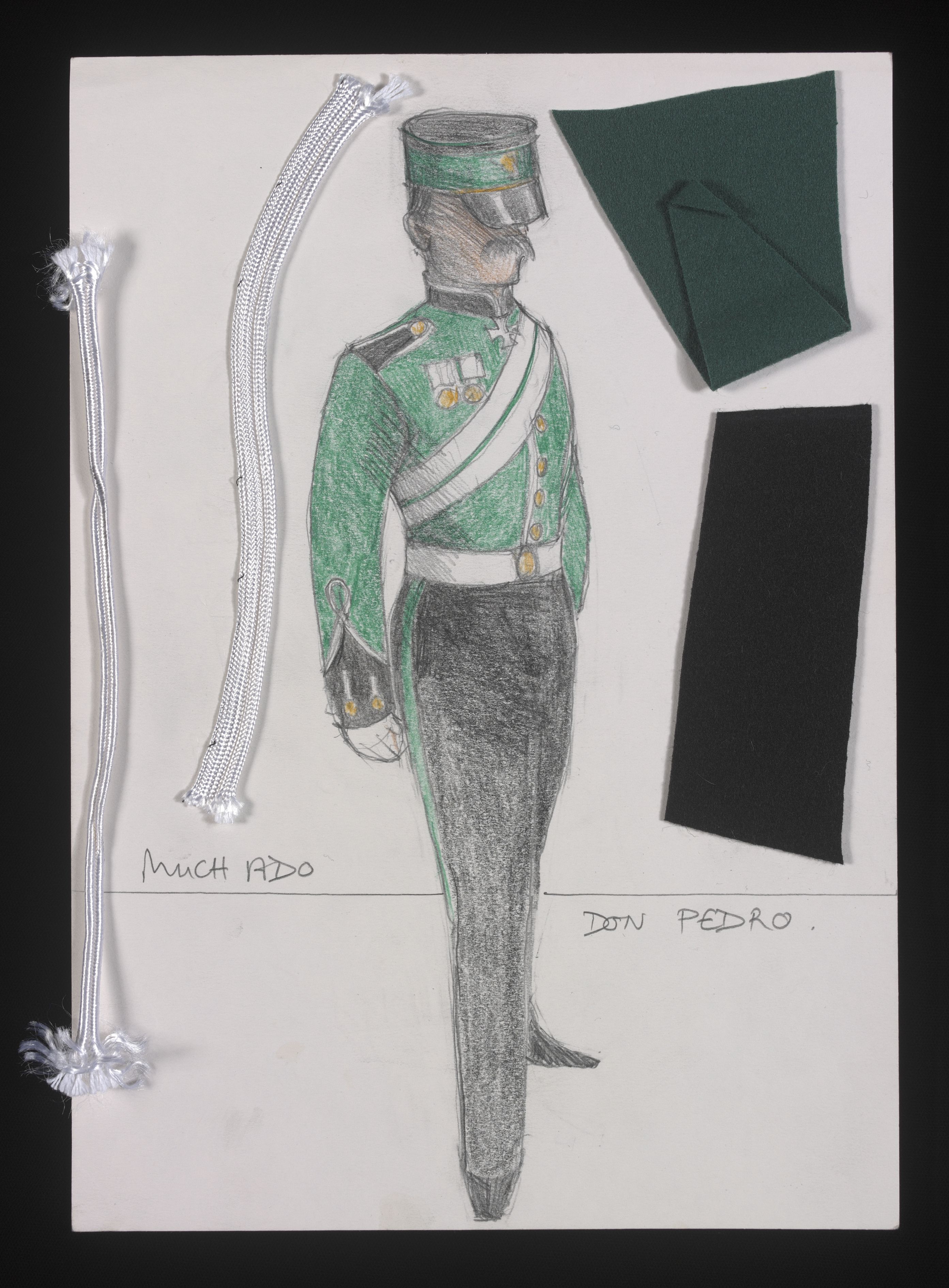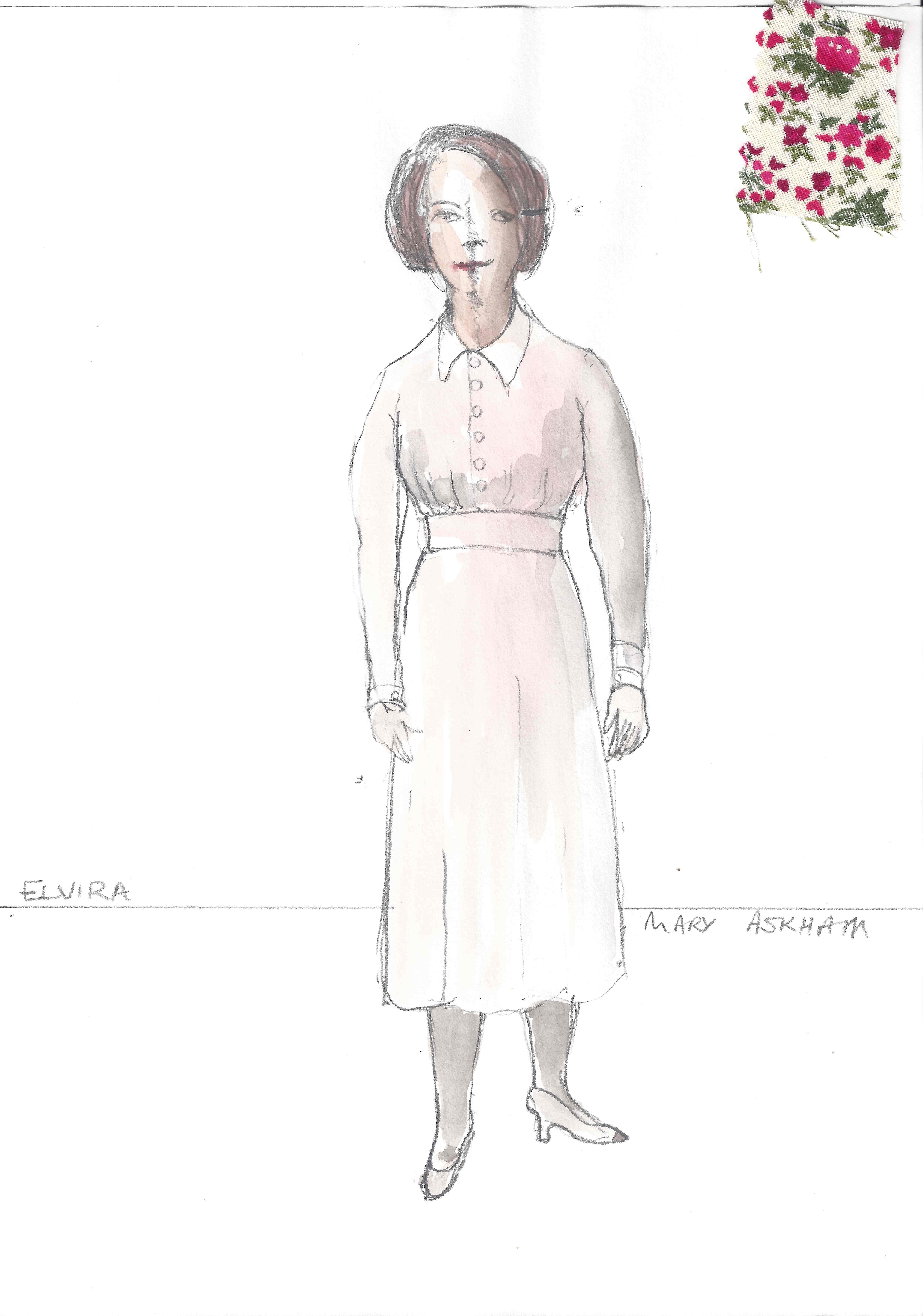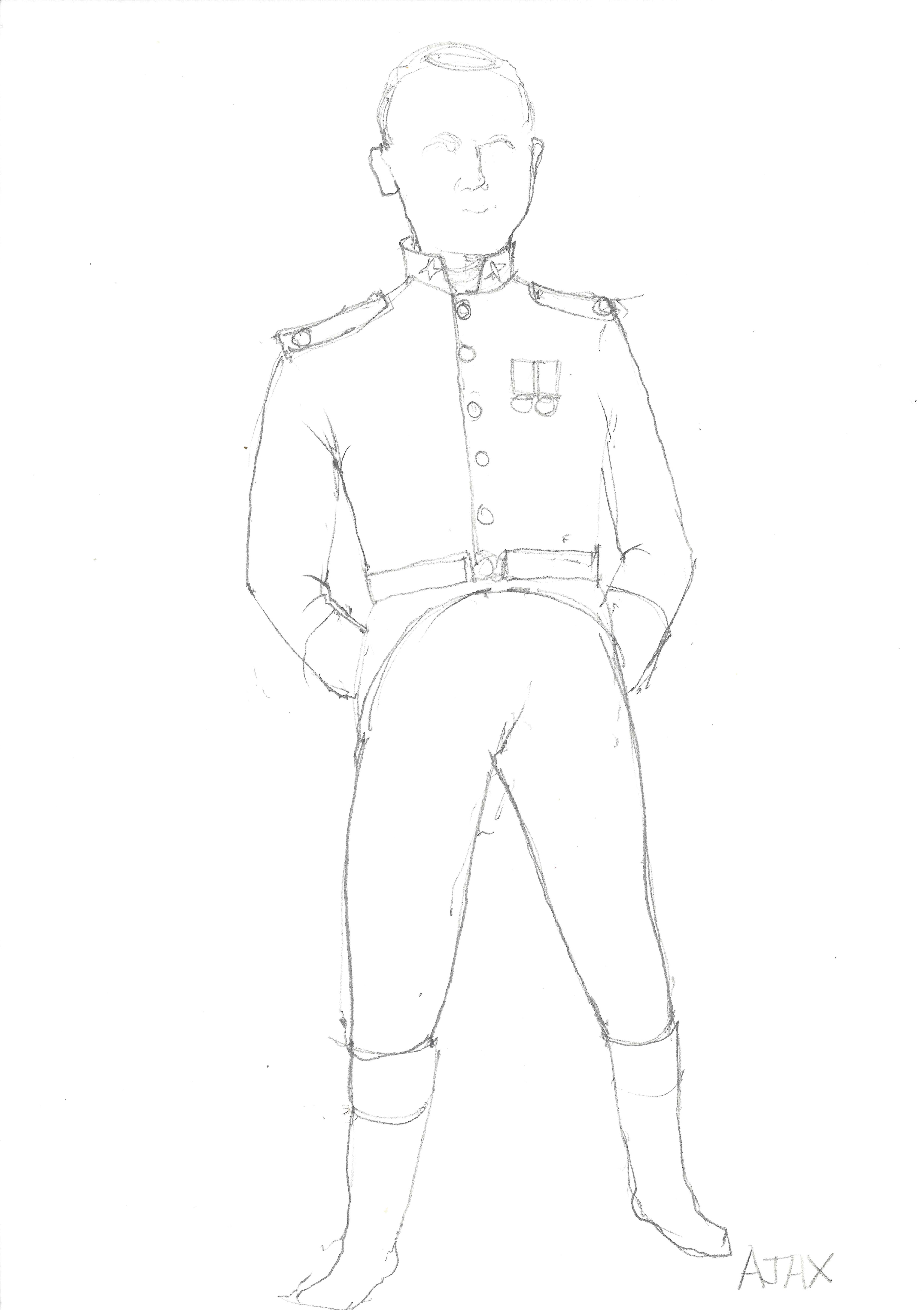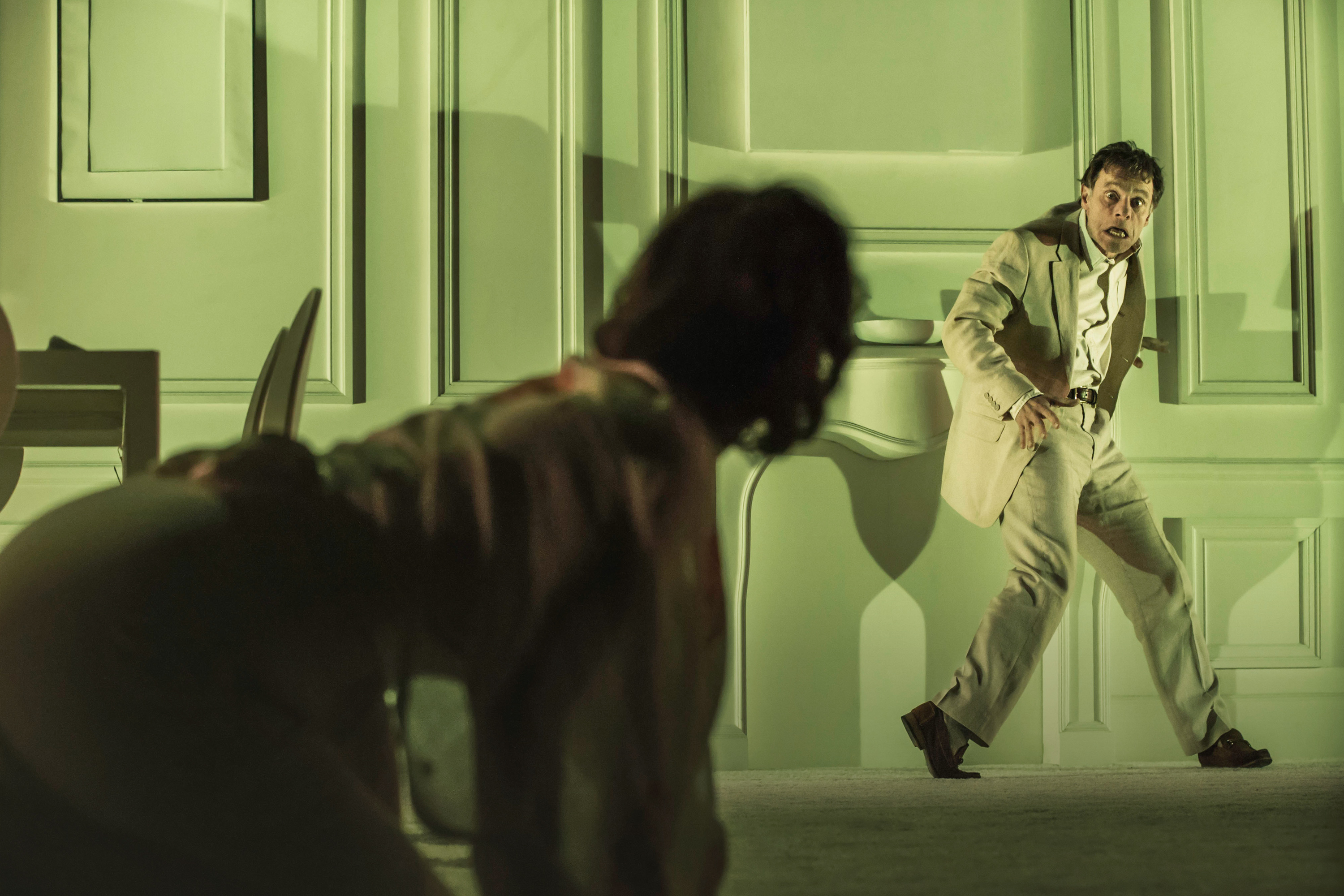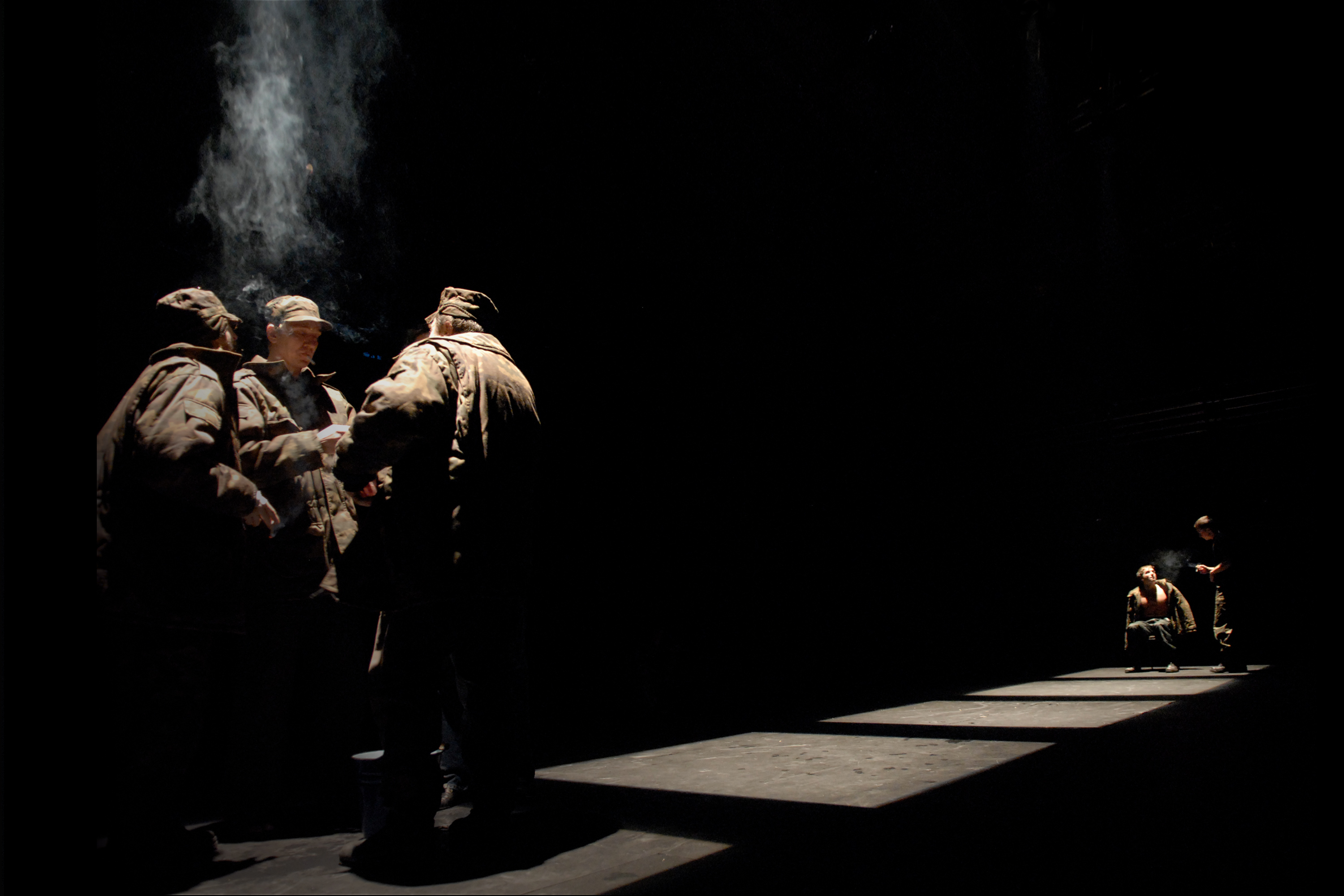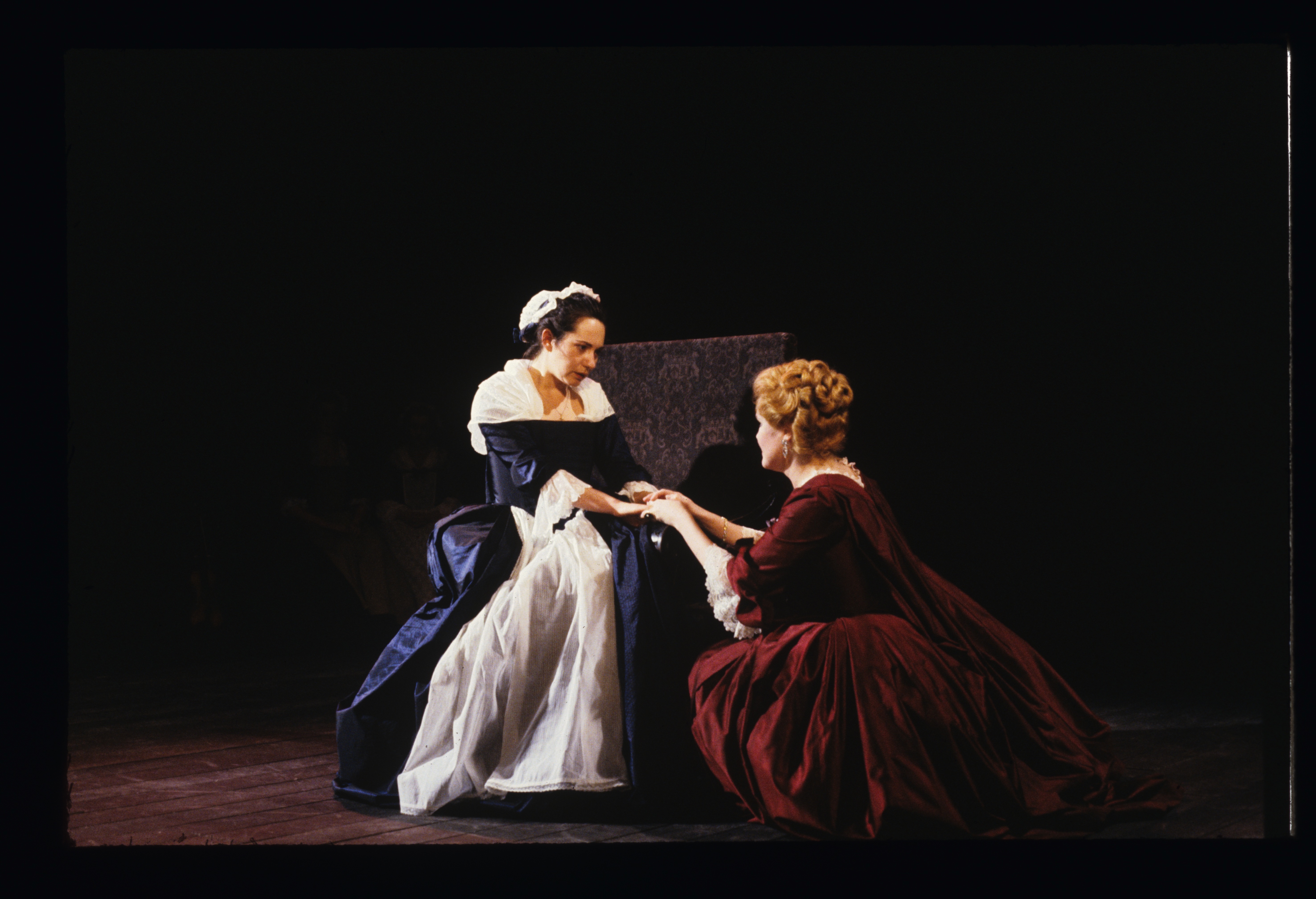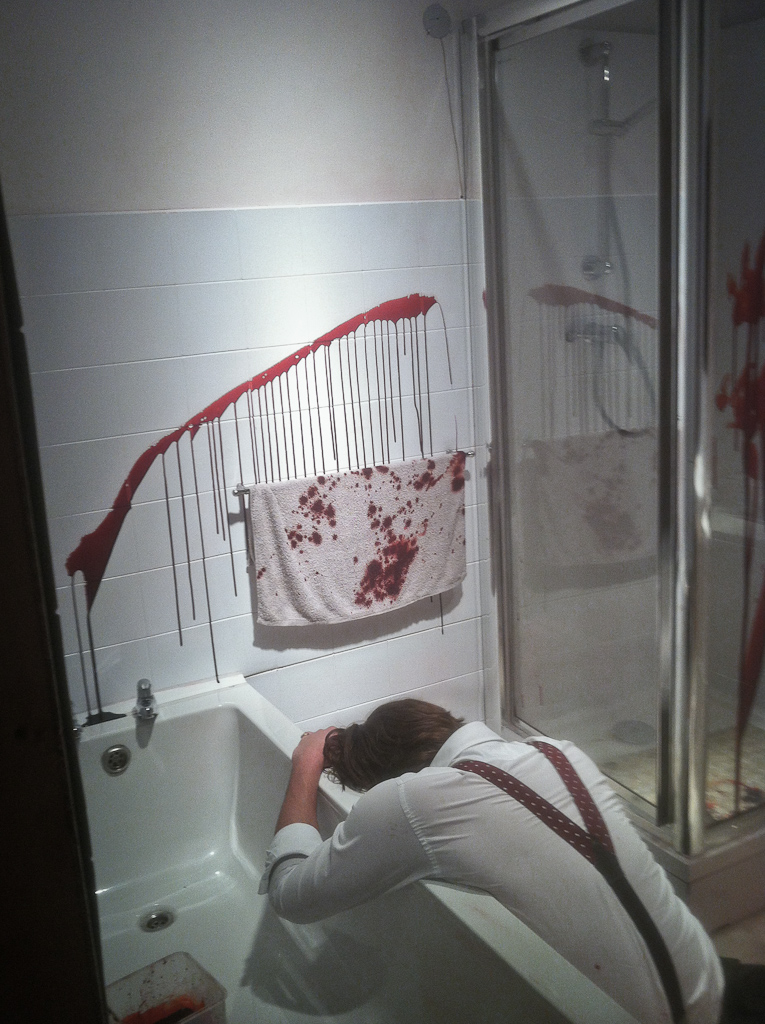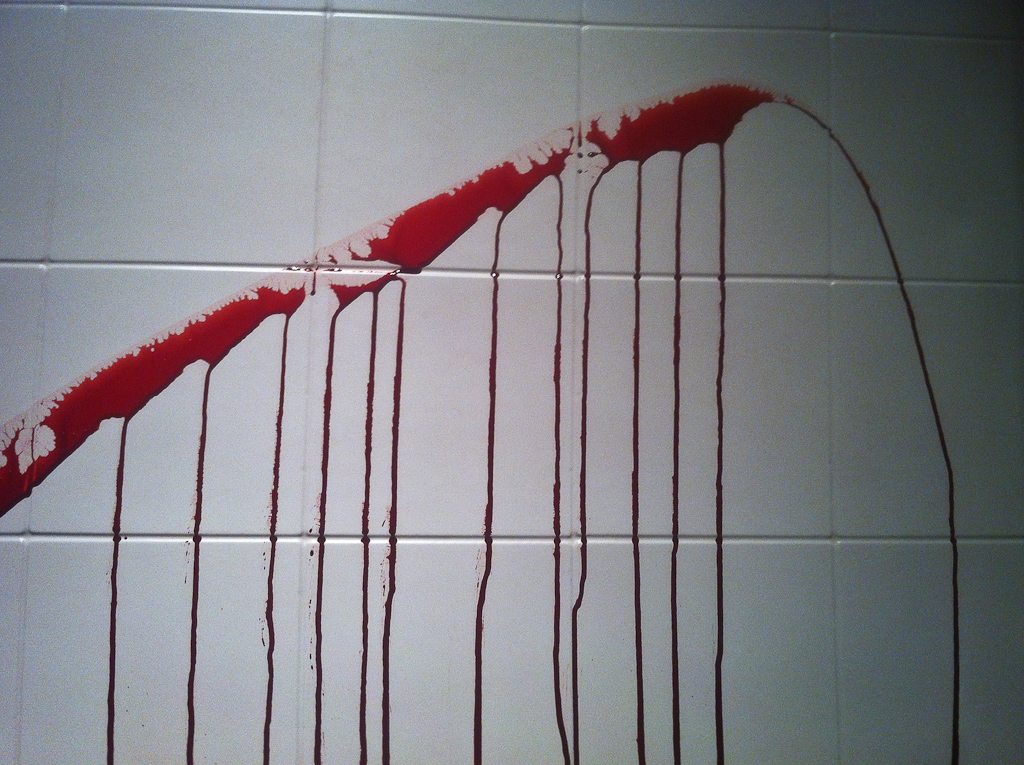Skip links
Designing Cheek by Jowl
Over the past forty years, Nick Ormerod has designed the sets and costumes of our shows alongside Declan Donnellan.
Discover Nick’s design process in his words below…
Vindice, the protagonist of the play, is in control of the space. He tells the story and plans his revenge with the complicity of the audience. The set allows us to achieve a narrative flow reminiscent of Vindice’s consciousness. The shutters define the space and reveal thresholds as his dream becomes a nightmare.
But the other problem is with Middleton (the writer), is that he’s not so great on space. He is not Shakespeare, who thinks spatially and who normally places you very clearly in a space for every scene he does. Middleton is sometimes confusing. For example, sometimes he has ordinary people walking into palaces when they really shouldn’t be there.
So I felt that we needed to articulate more clearly where each scene took place. And you needed to make it clear that, for example, Vindice’s home (because his mother features very strongly) should be in a much less aristocratic space than the palace where the Duke lives. And I just felt we needed flexibility to root each of the spaces.
From ‘Into The Woods’, Episode 3 of ‘Not True But Useful’
Visit The Revenger’s Tragedy production page here
We have developed from touring, which requires simplicity and being lightweight, and we started very early on with virtually nothing in a small van and just the actors. I think in theatre, ‘need’ is a very good coordinate, […] and it takes quite a lot of mental discipline to analyse what is ‘decorative’ and to remove it, frankly, and to make sure that everything on stage is actually needed.
Episode 7 in the ‘Not True, But Useful’ podcast
My design for The Winter’s Tale featured a slatted box with wood panels which fall down and crash onto the ground. This stemmed from the very first conversation I had with Declan, where we found that the central event of the play should be the death of Mamillius (the son of Leontes and Hermione).
The panels that clad this box crash down and reveal the dead prince there. And in the text, it’s very weak, actually. Shakespeare doesn’t help you – he just has someone coming on announcing that the prince is dead, so that the nature of the event has to be in the horrified reaction of the actors. But if you have the whole set collapse, then the cataclysmic nature of the event is done in quite a concrete way.
From ‘Design Deep Dive’, Episode 7 of ‘Not True But Useful’
You can also listen to our podcast episode of The Winter’s Tale here.
Visit The Winter’s Tale production page here
We rehearse quite often in the Jerwood Space in London, and we were rehearsing The Changeling there. The Changeling is complicated, because you have to somehow bring two worlds together, one of which is the world of the aristocracy, and the other, apparently unrelated world of the madhouse. And I was struggling to imagine how this would work together. And it just turned out that the actual door in the rehearsal room was working really well. So I thought, well, why not use that door? And so we built it. I got the builder in and said, ‘look, let’s have that door’.
It had a glass panel, which you could half see through, and I think was effective in terms of bloodstained hands on the glass door, and people dying behind the door so you didn’t quite see. Anyway, it worked. It worked very well in rehearsal. And I couldn’t see a good reason not to have it in performance.
If you see any photos of The Changeling, behind Olivia Williams and Tom Hiddleston there in the background seems to be the Jerwood Space door. But in fact it’s the fake door that we toured around Europe with!
From ‘Into The Woods’, Episode 3 of ‘Not True But Useful’
You can also listen to our podcast episode on The Changeling here.
Visit The Changeling production page here
Every piece of theatre should ideally be moulded into one. So you should experience it without thinking, ‘oh, what an amazing piece of design.’ I think a great piece of design disappears into the whole, and you come out thinking, ‘that was amazing’ – but you can’t necessarily put your finger on it. And that’s the most triumphant piece of design, I think.
Episode 7 in the ‘Not True, But Useful’ podcast
The set for ‘Tis Pity She’s A Whore was designed very fast and ambitiously, because it was a room with a bathroom and another space. But I remember that we were just working with the actors and it became clearer and clearer that actually the play is so much about Annabella.
When we decided that it was going to be her bedroom, it seemed obvious that you needed one entrance into the bedroom from the rest of the house.
Bathrooms are very good for half seeing violence in because they are pristine and white, and yes, we were able to soak it in blood, which you half saw. You never fully saw the bathroom, but you just saw the shower splattered with blood where he had torn her heart out.
We have very little on stage, therefore the more objects that can be used in more ways than one the better.
So Annabella’s room is used for Hippolyta’s room, and we see scenes that sort of happen in Annabella’s imagination, but are actually happening elsewhere or are not happening. And so the same bed has different functions.
From Series 2, Episode 2 of ‘Not True But Useful’.
Visit the ‘Tis Pity She’s A Whore production page here.
My advice [to budding designers] would be to be in rehearsal as much as possible. And that’s not always possible because sometimes, in particular, the director doesn’t necessarily want the designer there very much. And of course, the designer has other concerns, which means that he or she can’t be in it […] But my advice would be to get in there, get in the rehearsal room. And if you’ve designed a set, you’re the one who understands how it works. You need to persuade people and show them how it works, and just be there!
Episode 7 in the ‘Not True, But Useful’ podcast


